All about bathhouses afloat

The development of a site on the bank of a river or lake can give a very nice result. However, building up the land is not too sensible. It is important to know everything about bathhouses on the floating in order to properly solve the problem and understand whether such a step is necessary.
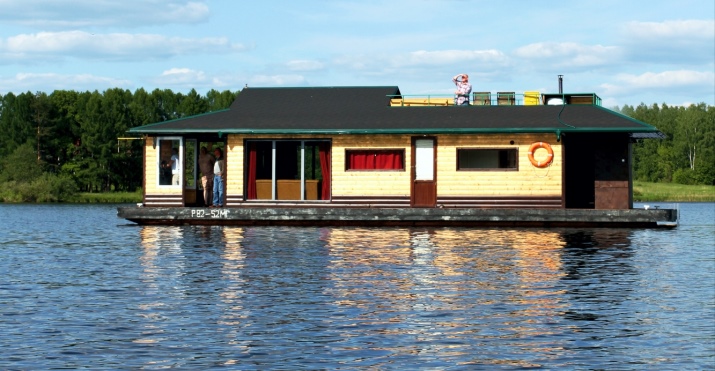
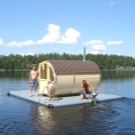

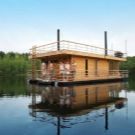
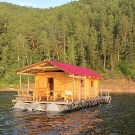
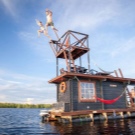
Requirements
Setting up a bathhouse afloat has serious advantages. You will be able to bathe right after bathing procedures. Problems with the water supply and with the work of the sewage system are automatically solved. However, high humidity and contact with water, isolation from the outside world will have to be taken into account.
Important: according to statistics, fires threaten floating baths 28 times less than flooding or other water-related accidents.
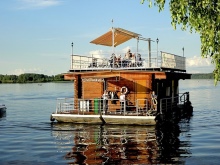
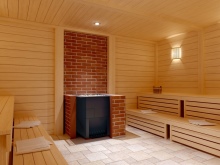
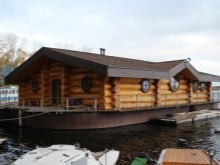
Be sure to use a special design stove - only with gas heating and increased security. It is required to have a stock of fire extinguishers and other means for suppressing fire in the floating bath. Build such a structure should only be those who understand the use of pontoons. The indispensable components of the bathhouse afloat are:
- Guardrails (to prevent accidental falls into the water);
- special floor coverings (which do not slip and do not support combustion);
- life jackets (at least 1 per user);
- availability of lifebuoys.
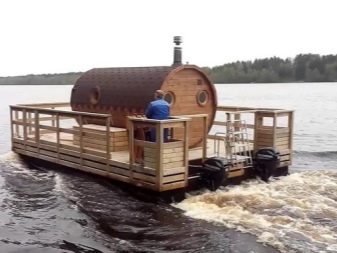

You can always get the exact list of requirements from the small boat inspectors.
It is not allowed to build a bathhouse in a protected area, in a nature reserve or a national park. It is worth bearing in mind that all waste water must be disposed of outside the protected areas. An alternative solution - the use of large septic tanks. Otherwise, there are almost no special requirements, and you can be guided by your own preferences.
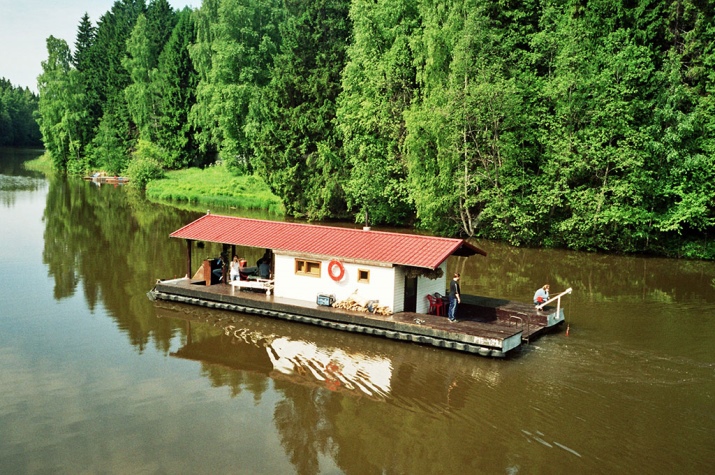
Projects
A lot depends on the choice of the type of design for construction and use. There are several basic variants of floating baths known:
- cabins, put on a raft;
- towed buildings;
- converted boats and catamarans, other types of small vessels;
- dinghy assemblies.
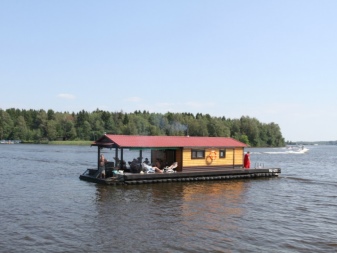
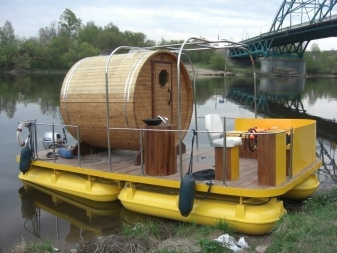
When a floating bath is made on the basis of watercrafts, it will have an autonomous course. Provide it easiest hinged boat motor. With the help of such an engine, the structure is taken away from the shore for 100-200 m, and then, if necessary, return to the pier. In any case, the bathhouse on the water is divided into two main components: the building box with all the necessary "stuffing" and infrastructure and the supporting platform. The building itself is created without any problems; most often a log cabin made of timber or a frame house with a reinforced base is put up.
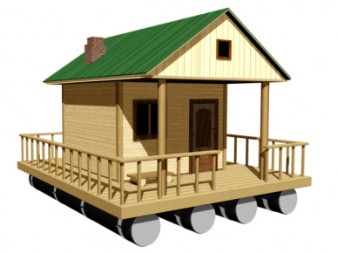
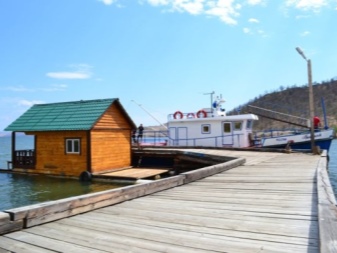
Floating platforms can be made from logs or on the basis of prefabricated modules. Experts note that even on a pontoon special pattern - and the more so on a raft made his own hands - is not worth building a structure larger than 3x4 m. Otherwise the load will be too great.
Particular attention should be paid to the correct determination of the center of gravity of the building. To simplify the calculation of the load, guided by the total mass of the design with the addition of 600-800 kg (visitors, necessary things).
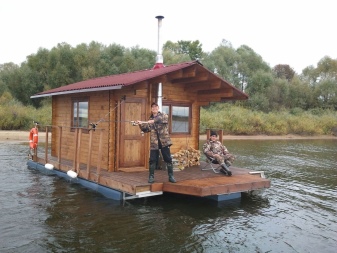
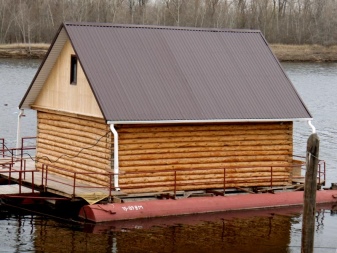
Misses are corrected by installing polyethylene barrels. Filling them with water or pouring it out as needed, you can provide a perfect balance. Professionals note that the use of pontoons is safer than the traditional support of a simple raft. Most often frames are made on the basis of larch or oak beam. In recent years, pontoons made of aluminum profiles are gaining popularity.
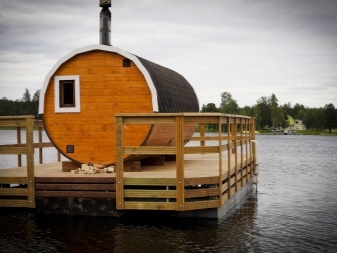
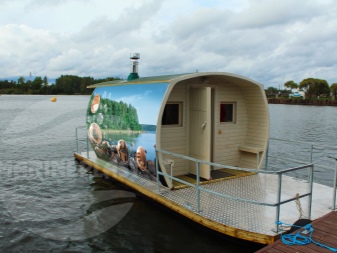
Fastening balancing barrels are carried out in three lines, according to the so-called catamaran scheme. Usually tend to calculate the project so that the bath will remain on the surface, even if half of the tanks are filled. The steam room box is placed in an arbitrarily chosen place on the platform. Some people prefer direct access to the water by hinged stairs without leaving the room.
When planning a long trip on the water in the bathing complex, both the supporting frame and the upper deck are placed on the pontoons of industrial design.
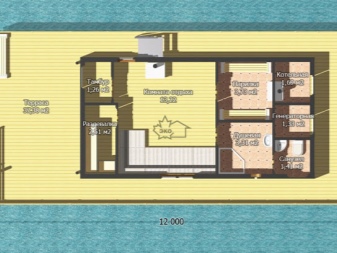
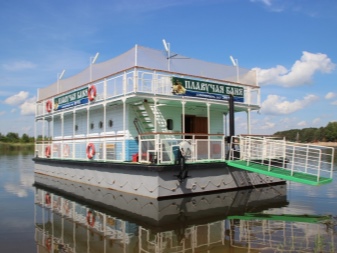
Materials
The main platform of the bath is formed on the basis of steel angles, metal profile or a square tubular profile. The deck is advised to be lined with bakelite plywood. The sink and the leisure area are equipped with a flooring based on sanded oak. A good material for pontoons or barrels is fiberglass.
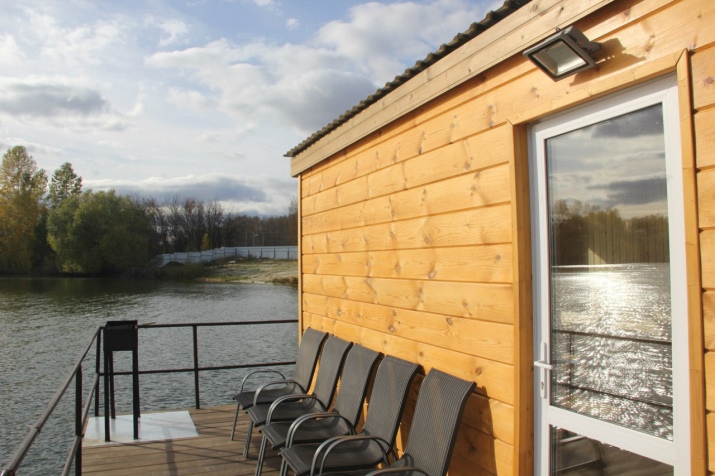
If the bath is very large, you must buy prefabricated buoyancy units, which are made of rotary-pressed polyethylene. Such modules have a typical shape and are equipped with grooves for mounting. Pontoons can be made of wood, which is a good option in places with harsh winters and sweltering summer months. The vast majority of people, however, choose structures made of plastic, excellent for a temperate climate zone.
Plastic pontoons are relatively lightweight, but they can carry substantial loads.
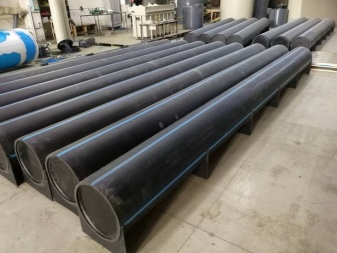
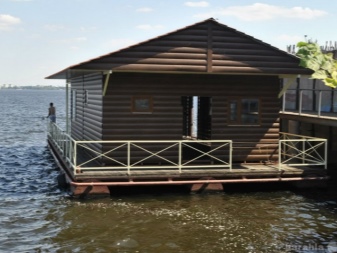
Sometimes metal is used. High-quality metal platforms can be made in factory or artisanal conditions. They are very expensive and require complex maintenance. Steel pontoon will have to be painted regularly and diligently cleaned. If traditional bath structures made of boards do not suit you, you can use the frame technology.
The use of aerated concrete, brick is out of the question - for obvious reasons.
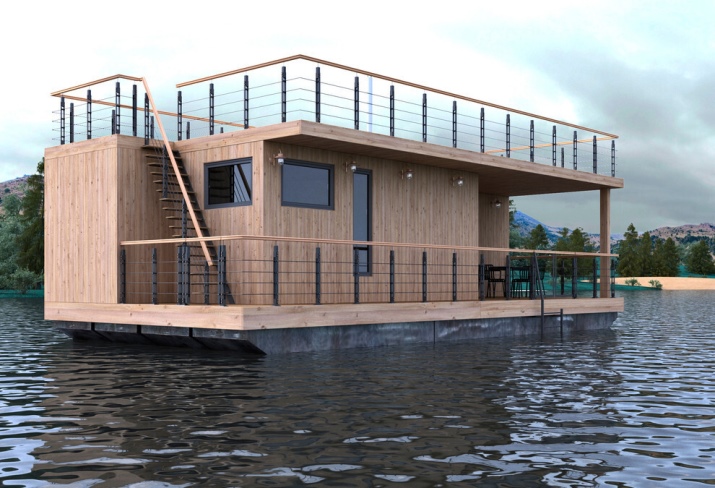
Building technology
Floating steam room differs from the one installed on the shore only by higher requirements for waterproofing and the specifics of ventilation. Mastic treatment of all exterior surfaces - and especially the base of the building - is necessary. Widespread use of frame floating baths based on galvanized profiles. For insulation, mineral wadding with a foil layer is often used. Outer layers are formed on the basis of foam boards.
Any wooden parts are required to be coated with a layer of epoxy yacht varnish. Other impregnations will have to be rejected.
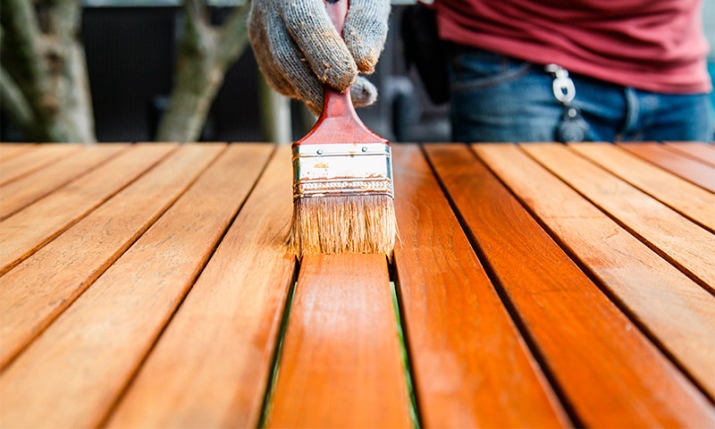
It is necessary to fix the pontoon with briquettes and pipes, if it is possible to deepen them into the bottom by 1 m, but it is easier to use cables or chains. The work will require the use of special machines; the supports must match the size and weight of the bath.
Tips:
- drench the bottom with clay;
- assemble the frame on the shore, then transfer it to the right place;
- Provide multistage filtration of drains;
- Cover the roof with metal tiles.
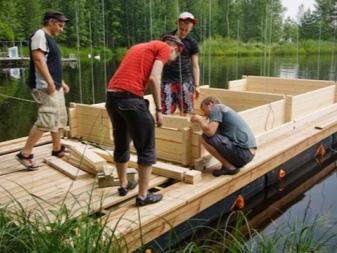
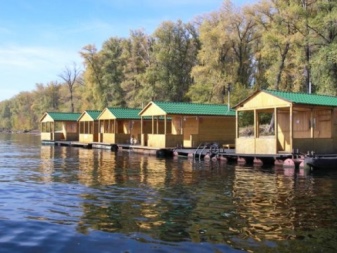
Beautiful examples
This photo shows an elegant floating bathhouse in the middle of a body of water. The structure is long and stocky, and is covered with a gable roof of metal tiles. There is even something like a small terrace for relaxing after bathing.
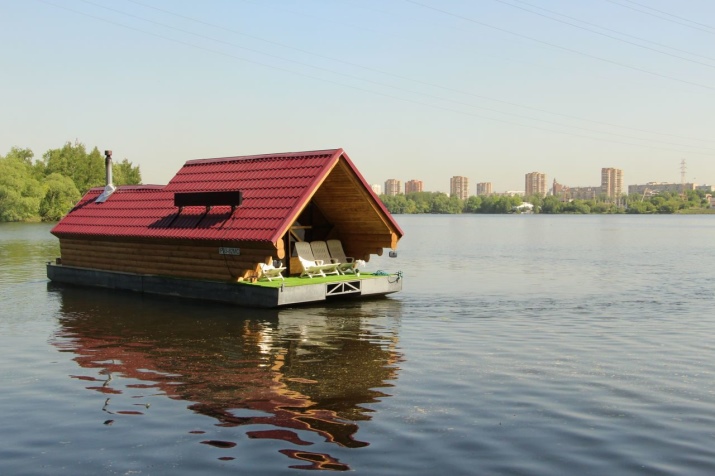
And this bath on the pontoon, made like a barrel (as evidenced by the similarity of forms). In general, the result is quite original and seems to be quite practical solution.
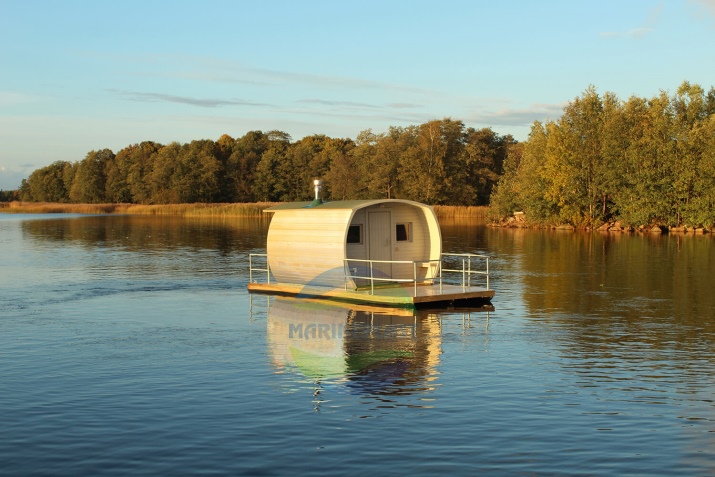
See the following video for an overview of the bathhouse afloat.




